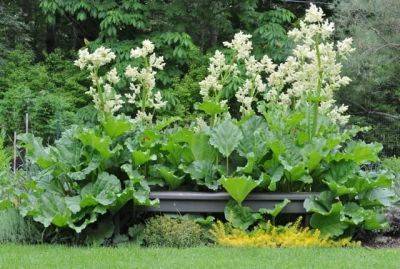IT WASN’T ONE OF THOSE “KA-POW!” YEARS in the garden, visually (well, unless you were my dear old rhubarb, above). In fact at many moments it was more “ka-bam!” (as in things crashing and burning, rather than showing off in bursts of glory).
Nature Ideas, Tips & Guides
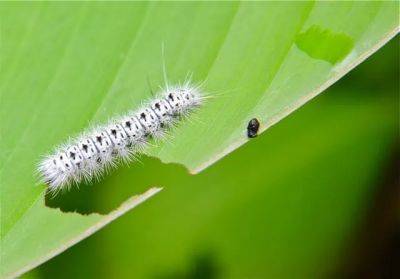
Making friends with late-summer caterpillars
Lately I have a lot of little fuzzy black and white creatures eating the leaves of my cannas (above), which is what got me started wondering who’s who. Turns out that’s the larval form of a hickory tussock moth, I think, whose usual diet is ash, elm, oak, hickory, maple, willow, and other trees.Though he looks velvety, look but don’t touch, apparently: The long “lashes” of the hickory tussock moth, Lophocampa caryae, are hollow tubes connected to poison glands, and can give susceptible people a stinging nettle-like rash or other reaction. The rest of the bristles, or setae, may also be irritating.This extensive University of Wisconsin-Milwaukee article offers a full portrait of the life of the hickory tussock moth, which apparently will spend the winter in a silk cocoon under tree bark or on the ground, then eventually works its way gradually n
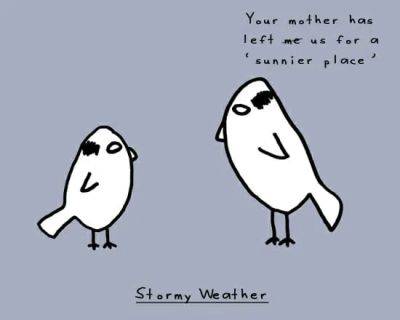
Recap: how to make a garden for the birds
THEY’RE LEAVING (OR COMING BACK) in increasing numbers these days. The birds, I mean.
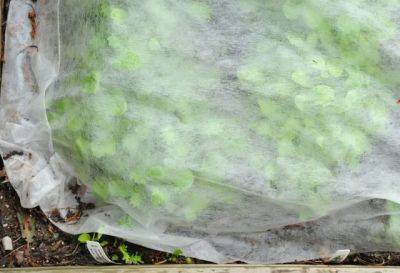
Growing under cover: tips from paul gallione
Gallione, in his position as Technical Services Technician in the research department at Johnny’s Selected Seeds in Maine, is used to answering gardeners’ questions. I started at the beginning with mine: Why grow crops under cover, anyhow?There are two basic uses for fabric row covers, Paul explained:To modify temperature (for heat retention or frost protection, most early and late in the season with heavyweight fabrics); As a barrier to keep out insects, crows, and chipmunks, to name a few common troublemakers. (Note: You can also create some shade, perhaps for summer salads—t

Bee balm: make room for monarda, with mt. cuba’s george coombs
Read along as you listen to the June 26, 2107 edition of my public-radio show and podcast using the player below. You can subscribe to all future editions on iTunes or Stitcher (and browse my archive of podcasts here).evaluating monarda with george coombs of mt. cubaQ. We’ve talked before on the show about your past trials of other native plants like Baptisia and Heuchera—and native plants are the mission of Mt. Cuba, which is both a garden for visiting and a research center, right?A. Mt. Cuba Center is actually a former du Pont family estate, the Copeland family estate, and they left their estate to become a public garden. What kind of sets us apart from others in the area is that we focus on native plants. We broadly define our nativity region as the Eastern United States.We do a lot of work promoting plants in a display capacity in the gardens itself, and then we also do research like what I do, trying to help

Looking among the leaves: tree identification
But I had some fun with online ID tools, too—though I admit I often get lost about halfway through the keying-out process, always failing to answer one of the process-of-elimination questions wrong and going down the wrong path. No matter, really–because every path leads to more learning about more woody plants.But as it says in big red letters on the tool of all tools, from so-called Dr. Dendro (for dendrology,
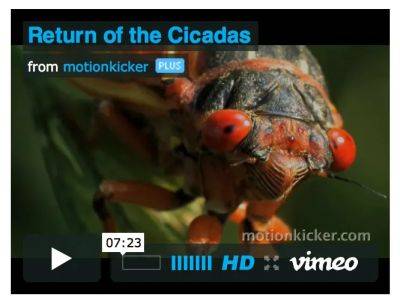
A video celebration of the 17-year cicada
I’VE CONFESSED MY FASCINATION for the emerging 17-year periodical cicadas already, and that was even before being treated to this trailer for an hour-long documentary by filmmaker and timelapse specialist Samuel Orr. Now do you believe me that the genus name of these creatures who possess the master plan of all master plans—Magicicada–is no accident? Magic! Orr’s film, which is seeking funding on Kickstarter, will be done next year, and is projected to be shown on PBS in 2015.
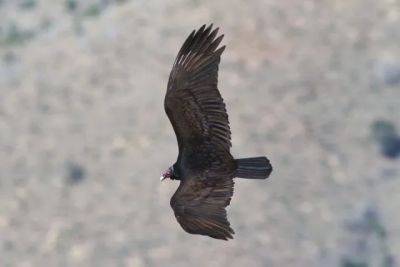
Giveaway: ‘hawks in flight,’ and pete dunne q&a
The new edition comes two-dozen years after the first, and includes 11 species not previously included.“The book itself really is a framework,” says Dunne. “It’s the ante that gets you into the game.” Bird identification, he says, “is really just a matter of learning a new acquaintance’s name–once you get past that that’s where the real fun begins, and you can start to get to know the person.” Er, or bird.It’s not just physical field markings, says Dunne—memorizing who has how many wing bars or what tail size and shape—any more than getting to know any of us is about our mere eye color or hair length.Important insights come from noticing what birds do, and where they do it. When speaking of habitat, and what clues it can offer, Dunne uses the analogy of going to a concert hall versus a football stadium: you expect to hear music in one, and watch a game in anot
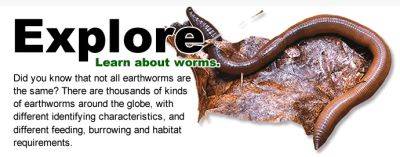
Earthworm 101, with great lakes worm watch
First, some background: Great Lakes Worm Watch is a citizen-science outreach organization, working to map the state of the earthworms—and the habitats they’re living in.“We want to know where earthworms are across the landscape,” says Ryan—and that means even beyond the Great Lakes area, where the project began. (There is a Canada Worm Watch, too, for those across the border; researchers at the University of Vermont, at the Cary Institute in Millbrook, New York, and elsewhere are likewise studying earthworm invasion.)Individuals, schools or garden groups can sign on help collect data on what worms are fou
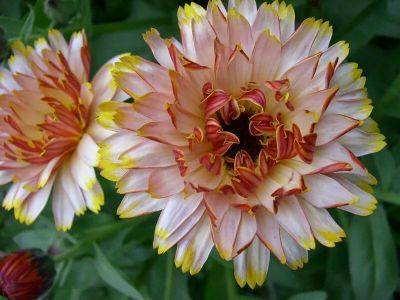
Talking calendula, salads, and beneficial insects with frank morton of wild garden seed
He also publishes what is “famously the world’s latest seed catalog” to drop each year, but he’s making no excuses. While other companies are sending out theirs, the Mortons are harvesting the seed those companies ordered from Wild Garden. I’ve gleaned a few of Morton’s plant lessons: about calendula, beneficial insects, and how home gardeners wanting to know just which lettuce to grow can set up their very own seed trial.FRANK MORTON, whose certified-organic Wild Garden Seed farmland is in Philomath, Oregon, grew salad for 18 years for restaurants, “and that’s when I did my breeding,” he recalls. “I had thousands of seeds and plants going and suddenly there was a red one—an accidental cross between a red Romaine and a green oakleaf. But when I saved its seed, I didn’t get red ones, but traits from both parents.”A lettuce breeder was born.“Basically I learned from the lettuce where new varieties come from.”
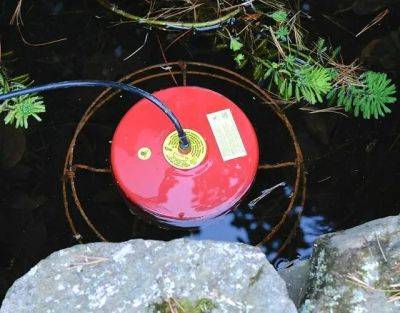
Winterizing the water garden: top tips
If trapped under a solid sheet of ice, decomposing plant material and wastes from fish or other inhabitants can create a building of noxious elements such as ammonia, nitrites and carbon dioxide, all of which can harm (or suffocate) any life overwintering in the pool, and also taint the water.Make a plan now to keep a hole in the ice; never let the pool freeze completely over. Depending on the pool size and your wintertime lows, maintain at least a small hole in the ice with an appropriate wattage level of floating pond de-icer (that’s one of
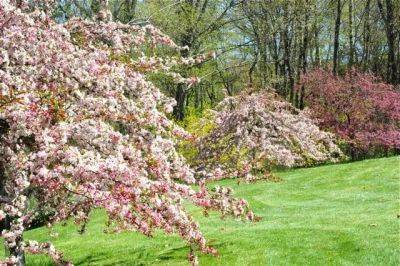
Must-have (for you and the birds): crabapples
I love them with little yellow fruits (like ‘Bob White’) or giant, gleaming red ones (like ‘Ralph Shay’, whose fruits are just below). Regular-sized red fruits are wonderful, too.If I had to recommend only one…I couldn’t, but I most of all love the crabapples with Malus sargentii “blood”—the wider-than-tall genes of the Sargent crabapple, like my pink-flowered ‘Candy Mint’ plants (the two paler-pink ones in the photo), or beautiful ‘Tina’ (a variety I don’t have—yet). I like the Sargent types because they lo
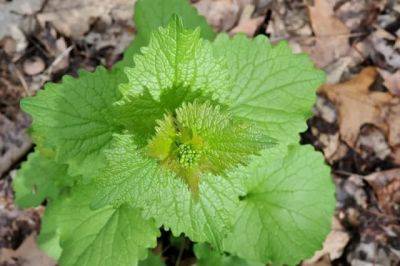
Everything coming up weeds? some help
IT’S THAT TIME OF YEAR: Everything seems to be coming up weeds. It can really help to know your opponent–and also, sometimes, simply to commiserate with other gardeners who are facing the problem plants that came with the place (like my profusion of garlic mustard, above), and also perhaps a few they inadvertently introduced themselves.
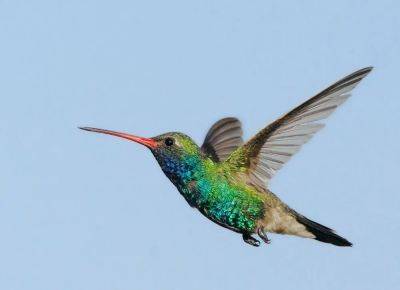
Birdnote q&a: your questions answered on hummingbird migration, and flying in formation
Remember the BirdNote backstory from last week: In 2002, the then-executive director of Seattle Audubon heard a short public-radio show called StarDate. “We could do that with birds,” she thought. In 2005 the idea became a two-minute, seven-day-a-week public-radio “interstitial” (as short programs are called) that recently caught my ear. I asked BirdNote to help me answer all the recent bird questions you had asked me. (In case you missed it last week, for installment Number 1, we tackled this subject: How do birds make themselves at home—even in winter?)Parts of Ellen’s answers below are in the 2-minute clips you can stream (all in the green links–or you can read the transcripts of each episode at those links if you prefer). Here we go:how do hummingbirds do it?Q. The miracle of hummingbird migration amazes all of us. How do they manage to migrate from the northern United States all the way to Mexico and beyon

Cardinal climber and its cousins, annual vines that are hummingbird favorites
Sigh.I have to say I was a little relieved to see that the Chicago-based blogger who calls himself Mr. Brown Thumb, Ramon Gonzalez, has been similarly frustrated (misery loves company and all that). And also pleased to see that Ramon’s and my common affection for the cypress vine was shared by Thomas Jefferson, who grew it at Monticello.Whichever of these hummingbird favorites you grow, treat them like other morning glories: For a headstart (especially in short-season Northern garden areas like mine) sow indoors and grow under lights, sowing 4-6 weeks before final frost. Soak the seed in warm water for a few

Reassurance, delivered in a rainbow
SOMETIMES I NEED A LITTLE ENCOURAGEMENT–we all do, right? The recent pounding snowstorms and resulting garden losses, a book deadline that’s trying to unhinge me–and, frankly, the relentless headlines, week after week, detailing a world in upheaval. And then, as if it heard that I could use a hug, just as dawn broke yesterday there was this.
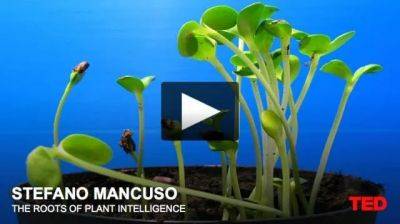
‘plants are not just able to live; they are able to sense.’–stefano mancuso
MY GARDEN MENTOR’S NAME is Marco Stufano, and so when, in a Google search for something botanical, I happened on a result that said “Stefano Mancuso,” I just had to click. Had they jumbled my Marco’s name? No; it yielded a 2010 TED Talk by an Italian plant scientist, and though not the answer to what I had been seeking, it perfectly summed up how I (and Marco) feel about plants.
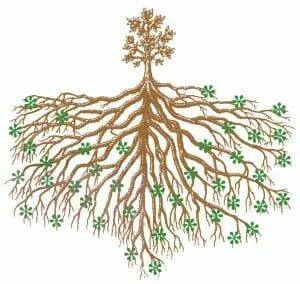
Feed the soil: my experiment with mycorrhizae
The tipping point had been meeting Graham and Layla Phillips, who had recently taken over Bio-Organics, founded in 1996 and one of the first companies to commercialize mycorrhizal agricultural products (disclosure: they have advertised on A Way to Garden). We got to talking, and I pestered them with my usual endless questions–and then bought myself that jar of a blend of viable beneficial organisms from their online store.I didn’t just take their word for how it all worked, however; I dug deeper. Extensive Texas A&M research over more than 25 years reports that the benefits of mycorrhizae include plants that are more vigorous, with increased drought and disease resistance and the ability take up more nutrients and water. They may also need less pesticides because of their overall better response to stress. (Mycorrhizae have even been used by Aggie researchers on Texas lignite coal-industry land to try to revitalize it after mining, but I’m hoping your garden isn’t in that condition!)Even deeper background: Mycorrhizae weren’t
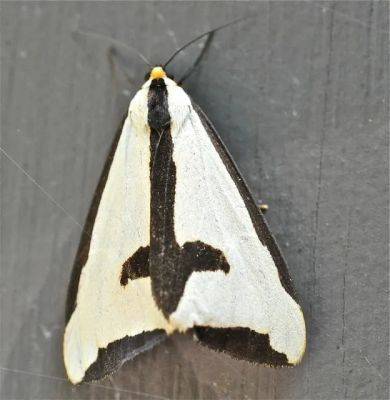
Celebrating national moth week, after dark
MY PhD BOTANIST NEIGHBOR, Brian, is setting up the sheet and lightbulb, and brewing the sticky-sweet bait of over-ripe bananas, brown sugar, molasses, watermelon and beer. It’s National Moth Week starting tomorrow (that’s a video from last year’s event, above), and we plan to attract and observe some night-flying moths. That’s what plant nuts like us do in July–so can we interest you in putting up a sheet and putting your support behind this national citizen-science effort, too?
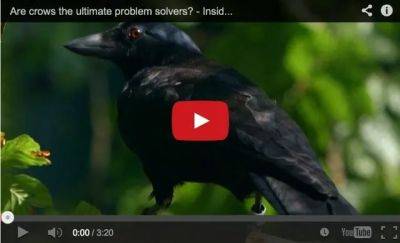
Learning about crows, online with cornell
THEY ARE ‘FUN-LOVING PARTY ANIMALS,’ says Kevin McGowan, a Cornell Lab of Ornithology researcher who has studied crows for more than 25 years. McGowan, acknowledging that people either love or hate these familiar birds, led a webinar I just attended (part 2 is Wednesday night; details below), sharing insights into their complex family structure and more. (Apparently crows are also very trendy, as the BBC TWO video from a recent show demonstrates in somewhat-glitzy fashion.)
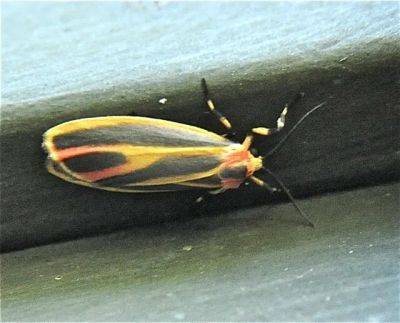
Lichen moths: bright, beautiful, bizarre
My new acquaintance (top photo) was Hypoprepia fucosa, the painted lichen moth, one of a group of mostly bright-colored insects listed in the guide as lichen moths.First I refreshed my memory a bit on lichen, of which there are three kinds: those that grow on trees or shrubs (epiphytic types); others that grow on the ground (terrestrial); and ones like those on my terrace—rock-dwelling, or saxicolous lichens. The painted lichen moth doesn’t have a relationship with that lichen on my patio stones, but rather with the epiphytic types, I quickly learned, but I wanted to know more, and dashed off a series of questions to Seabrooke (who with the Northeast moth guide collaborator David Beadle is currently working on a Southeast volume):Q. What is this group of moths’ relationship to lichens, anyhow?A: One of the fascinating things about moths as a group is that if it in any way resembles a plan
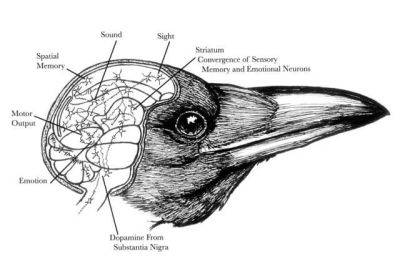
‘the gifts of the crow,’ with john marzluff
Marzluff is a renowned ornithologist and urban ecologist, and professor of wildlife sciences at the University of Washington. He is author most recently of “Welcome to Subirdia”—his fifth book. He has written other titles specifically about his area of particular expertise, the corvids—crows, ravens, jays and their relatives—including one in collaboration with illustrator Tony Angell that I just read called “Gifts of the Crow,” the subject of our discussion.Read along as you listen to the Dec. 21, 2015 edition of my public-radio show and podcast using the player below. You can subscribe to all future editions on iTunes or Stitcher (and browse my archive of podcasts here).my crow and raven q&a with dr. john marzluffQ. It has been raining here today. We haven’t had much rain in the Northeast lately, though I know you’ve been having crazy, crazy rain in the Pacific Northwest.A. It is very, very

Jewelweed: the ‘weed’ that’s a wildlife gem
A recent interview with ethnobotanist and author Mike Balick of the New York Botanical Garden got me thinking about jewelweed—and then a shady front-yard bed under an old Eastern red cedar did, when the “weed” grew overnight from almost-unnoticeable volunteers to nearly knee-high (below) in the first spurt of steady warmth.“Growing up in the Northeast,” said Balick, author of “Rodale’s 21st Century Herbal,” “when I’d get stung by nettles, the jewelweed (Impatiens capensis) is always growing nearby. What I do, since it’s only available for two or three months: I grind it up in the blender and put it in an ice-cube tray, and have some ice-cubed jewelweed to rub on my skin for rashes or irritations at other times.”So there’s a reason to let some grow this year: to make an effective,
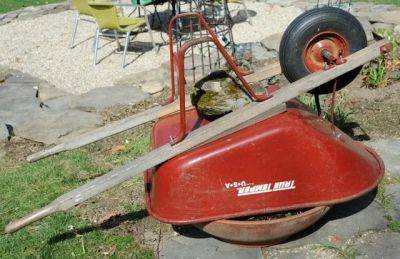
17 degrees? coping with spring frost in a garden
Watering the soil in pots–or beds–well before tucking things in is the first line of defense here, and what I did this afternoon. Cornell says that moist soil can hold four times more heat than dry, and also conducts the warmth toward the surface faster to aid in frost prevention.Watering the actual plants–such as with a sprinkler or hose-end wand–to wash off the frost just before dawn (the coldest part of the night)–can help when temperatures will be just around freezing, but with 17F forecast, I’m not setting any wakeup alarms here. Useless.I’d rather turn large containers and boxes (or my carts) upside-down over things than lay material right on top of succulent, tender plants–especially when high winds are forecast that will whip the material around. When I do need to resort to a fabric covering, like the side-by-side whiskey barrels of pan

Up close and personal with great blue herons
THIS SIMPLY MAKES ME HAPPY. Talk about up close and personal, huh? Thanks as ever to the Cornell Lab of Ornithology for letting us see such intimate views of the avian world. You may recall that the great blues like the occasional feast in my backyard frogponds, but I have a cure for that (or at least a semi-deterrent):

Garden friends: a reminder to keep evolving
THE OTHER NIGHT a newt ambled in after supper as if to join us for dessert. That morning, a pair of garter snakes had poked their heads up, periscope-style, from a stone wall. And nonstop frogpond madness: seven rambunctious male green frogs are fighting over one poor female. All are signs of a healthy garden where no chemicals are used, but also signal to me how important it is to make room for change in life: to shed a little skin, perhaps, or to try a change of venue every now and again (as do amphibians, which means “both lives”–in their case, land and water). Some photos of my provocative little friends. The red eft in my hands is the terrestrial youth stage of <a href=«http://amphibiaweb.org/cgi-bin/amphib_query?query_src=» https: class=«external» target="_blank">the Eastern newt, specifically the red-spotted subspecies (so not simply Notophthalmus viridescens, but Notophthalmus viridescens viridescens), which started its life in water as an aquatic larvae, not unlike a tadpole. She (he?) will spend the next two or three years or so wandering about up here with us earth-dwellers, before reaching sexual maturity and returning to the water to breed. Three adults that I can see are in the smaller of my backyard pools, presumably doing just that. I sometimes see adults (sort of khaki color but retaining those red spots surrounded by black rings) out of the water. Apparently they are able to make the shift again if their pool dries up and they need to relocate, for instance, I have read.
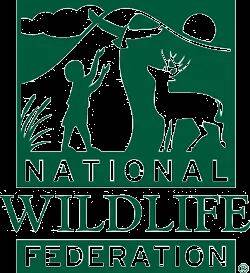
Can scotts really be a partner to the environment?
It’s not any more spinnable to my eye than the longtime association by Scotts—whose brands include Roundup, Miracle-Gro, Osmocote, and Ortho—with Monsanto has ever been.The Native Plants and Wildlife Gardens blog has a good post on the subject of this latest Scotts partnership, which is rightly drawing much criticism for the NWF, as does Paul Tukey at SafeLawns dot org. The NPandWG post also explains the Monsanto-Scotts connection, for those unfamiliar; both stories talk about the pros and cons of the tactic of “working with the devil” as a catalyst to change as a possible explanation of when nonprofits take money from those who appear to be at odds with their missions. An important point, but I have to say: I’m not buying it in this case.[UPDATE January 27, 2012: Scotts was fined in federal court for knowingly selling tainted bird seed. Pau

Links: mice, more than deer, a lyme threat?; epa turns back on bees; the 7,000th amphibian
A LEADING EXPERT ON LYME disease ecology sets the record straight in this short but relevation-loaded podcast, explaining how mice even more than deer are major players in the chain of transmission. Don’t miss this one, from a scientist at the Institute from Ecosystems Studies in nearby Millbrook, New York.EPA Fails to Ban Bee-Killing PesticideTHE ENVIRONMENTAL PROTECTION AGENCY declined a petition to ban clothianidin, a synthetic nicotine that is acutely lethal to bees, despite sharp declines in bee populations (and a recent ruling in France to ban a similar chemical).Welcome to Amphibian Number 7,000IN PERU, the discovery of Centrolene sabini (a kind of glass frog) marked 7,000 known amphibian species on the planet, where most of the news about these creatures is more that of decline. And if you’re
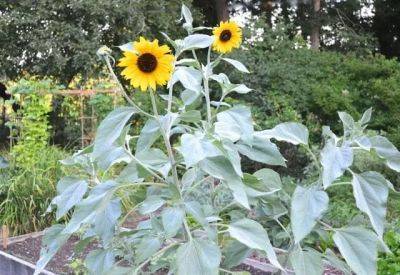
Stalking the beloved silver-leaf sunflower, helianthus argophyllus
Gardeners in some areas of Texas where the species is endemic are smiling right now. “I’ve got them all over my backyard,” they are perhaps saying, because the species can be found growing as a self-sowing annual in parts of Florida and North Carolina and Texas, says the Lady Bird Johnson Wildflower Center.The H. argophyllus selection I grew in 2012 was a refinement of the straight species called ‘Japanese Silver-Leaf’ (which I expect was so named after being bred in that country, as numerous fine sunflower varieties have been—crossing the genetics of our various U.S. natives). My plants grew from about 5 feet to 7 feet.Various sources say one should hide its awkward-looking “legs” with some other mid
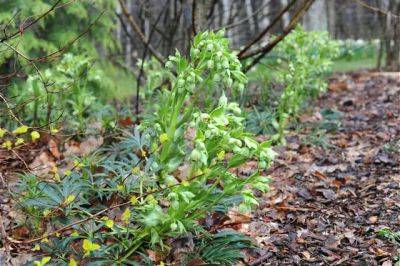
Out-of-synch spring after a non-winter: a recap
Quick note: The green text links will take you to full profiles of most of the plants mentioned, if any of them sound like something you’d like to add to your extra-early garden, whatever month it happens to happen in from year to year.january beginningsWE ALREADY TALKED in January 2012 about the witchhazels, or Hamamelis xintermedia, that began flowering about January 20, and continued all through February until halfway through March.Helleborus foetidus, above, the stinking hellebore, has been at it that long, too—and shows no signs of stopping. Apparently no winter is what this plant, which sows itself around the garden and is far less robust most years i
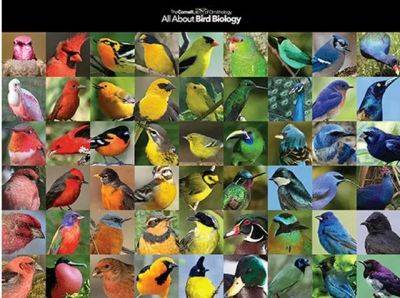
Weekend reading: fancy male birds, neonics and monarchs, antibiotic ‘aha’s’
I KNOW: This week’s reading list is heavy on news of the natural world, because that’s where my mind is: outdoors. Snow is shrinking fast in these first few sunny, above-freezing days–so stories of birds, butterflies, toads and even the planets caught my attention. The links:

Giveaway: rooting around for answers, in liz gilbert's 'the signature of all things'
Being plant-mad myself, I knew right away that the title referenced the obscure Doctrine of Signatures (later called the Signature of All Things). It’s a folk-medicine-meets-theology notion put forth beginning in Medieval times that God, in an act of mercy toward humans, had imprinted in all things—and on plants particularly—a signature, or sign, that revealed their use and meaning.From shape, color, or habitat of origin, herbalists and healers could gain a clue to a plant’s purpose—for instance, one with red sap might strengthen the blood (think bloodroot), or a kidney-shaped nut might be good for the kidneys. Some common garden-plant names today still echo the Doctrine, such as lungwort (Pulmonaria, for pulmonary ailments) or snakeroot (an antidote, it was thought, for snake venom).NOW, GILBERT’S NOVEL is not a musty old book about the Doctrine of Signatures; I promise. Nor is it a book about the other scientific disci
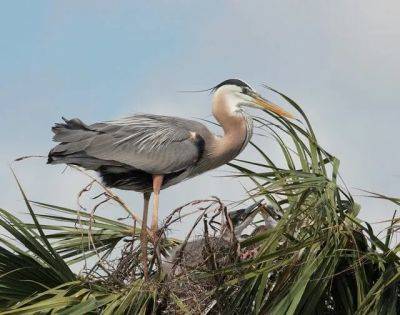
Birdnote q&a: your questions answered on what’s ‘home’ to a bird, and how they stay warm
Ellen Blackstone of the BirdNote team (who describes her job there as “writes/edits/finds photos/posts to the website/sits in on recordings”—sort of like my job at A Way to Garden) was kind and patient enough to be our teacher. Remember, parts of each answer are in the 2-minute clips you can stream (all in the green links–or you can read the transcripts of each episode at those links if you prefer). Here we go:nest, versus roostQ. The topic of where birds prefer to live, and especially the role of the nest in their lifestyles, seemed to provoke my readers’ curiosity—and also probably some misconceptions. What’s “home” to a bird? A. The great number of migratory species are all away from their nests–some as far as a different continent–during the nonbreeding season. Even among the residents, the majority of birds do not use their nest as a home but only a place to raise their young.Exceptions would be some hole-nesters that roost in their cavities throughout the year, but they are a real minority. Those might be chickadees or their cousi
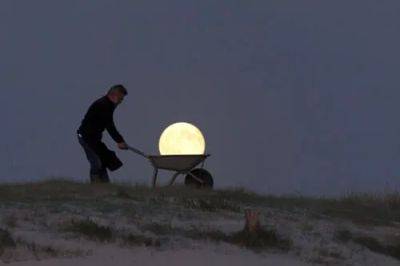
A new take on full-moon gardening
I WAITED TO SHOW YOU the art of French photographer Laurent Laveder until the full moon this morning, which seemed the right timing to admire the work of a man who likes to make magic with it. Laveder has been doing astrophotography since the last appearance of Halley’s Comet in 1986, including playful images like the one above.
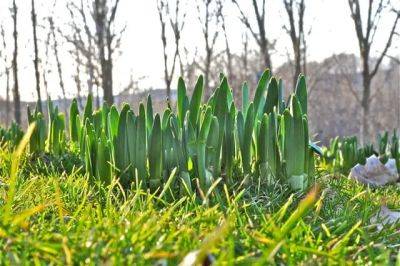
Links: poison lawns, a cubic foot of diversity, and help wanted at sissinghurst
NO SURPRISE here, but sort of a brutal reminder: The Great American Lawn in its most traditional sense (loaded with anything-but-green additives such as pesticides) is no place for your children. Early life exposure is linked to “pediatric cancers, decreased cognitive function, and behavioral problems.” So warns the American Academy of Pediatrics in a new report. SafeLawns.org, as ever, distills the takeaways. Make this the year you give up the weed and feed for good, please.christmas bird countTHE 113th annual Audubon Christmas Bird Count begins December 14, running through January 5. Sign up to help here by counting birds at feeders, or along with a nearby group out in the field (search by zip code for contact information for local groups to accompany at this link). Participation is free; no registration fee.the diversity in one cubic footI HAVE A fascination with the intercon
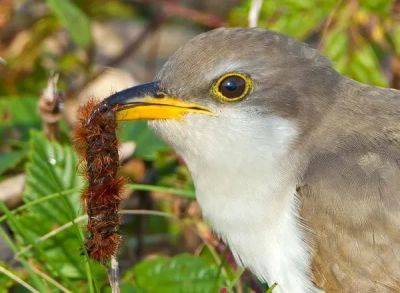
Birdnote q&a: what birds eat
In the Q&A that follows, Ellen’s answers contain green links to audio files from BirdNote’s archive that you won’t want to miss. A recap of earlier stories in our ongoing series is at the bottom of the page, along with information on how to get BirdNote daily–and if you want to give thanks to nonprofit BirdNote for all their wonderful avian “aha’s,” you can do so at this link.Q. I’ve read that flamingoes’ plumage may be more or less colorful depending on their diet, but is this true of other bird species, too?A. What on earth does the lowly house finch have in common with the elegant, long-legged flamingo? They are what they eat. In color, that is. The carotenoids in their diets affect what color they are. Carotenoids are the same pigments that give oranges and carrots–and brine shrimp–their color
Popular Topics
Our site greengrove.cc offers you to spend great time reading Nature latest Tips & Guides. Enjoy scrolling Nature Tips & Guides to learn more. Stay tuned following daily updates of Nature hacks and apply them in your real life. Be sure, you won’t regret entering the site once, because here you will find a lot of useful Nature stuff that will help you a lot in your daily life! Check it out yourself!
